This group of scientists from the University of British Columbia and led by Phil Gregory, spent more than a decade hunting for radio bumps in the night – and day – with the 300-foot telescope in Green Bank, West Virginia.
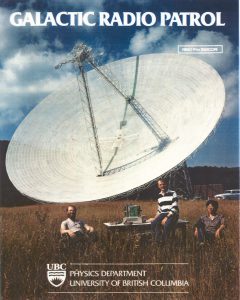
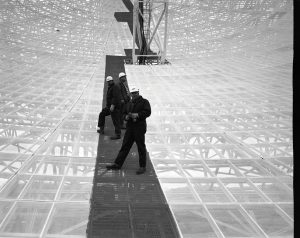
Workers on the 300-foot
Paths of sturdy panels were installed and painted on the surface of the 300-foot telescope in Green Bank, West Virginia to allow engineers to access the receiver feeds.
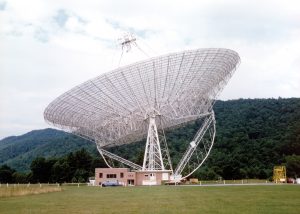
A telescope that couldn’t spin
The 300-foot telescope in Green Bank, West Virginia was a transit telescope, meaning that it could only lift and dip, not spin around on its base. In this photo, the 300-foot (after its 1970 surface upgrade) impressively poses at an angle, showing off how well balanced it was on its semi-circle gear. Its upgraded control building is directly beneath it.
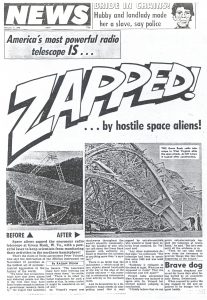
Zapped by Aliens?
On the night of November 15, 1988, the 300-foot telescope in Green Bank. West Virginia collapsed. Before official investigations discovered the cause as a worn metal gusset plate, theories abounded. One example of those theories is shown on the cover of this newspaper, saying that the telescope was attacked by “hostile space aliens.”
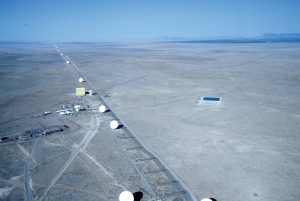
One arm of the VLA
The southwest arm of the three-armed Very Large Array is dotted with antennas for miles across the Plains of San Agustin in New Mexico. The VLA antennas are picked up and hauled along rail tracks several times a year to sharpen or deepen its view of the radio cosmos. At its widest separation, the outlying VLA antennas are 22 miles apart. The yellow Antenna Assembly Building is near the middle of this photo.
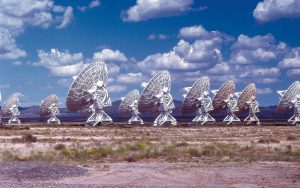
The VLA Array looking away
The antennas of the Very Large Array (VLA) observe the radio skies for an estimated 5000 hours each year. Scientists from around the world must submit proposals between February 1 and August 1 to use specific configurations of the VLA. See the most recent configuration schedule here.





